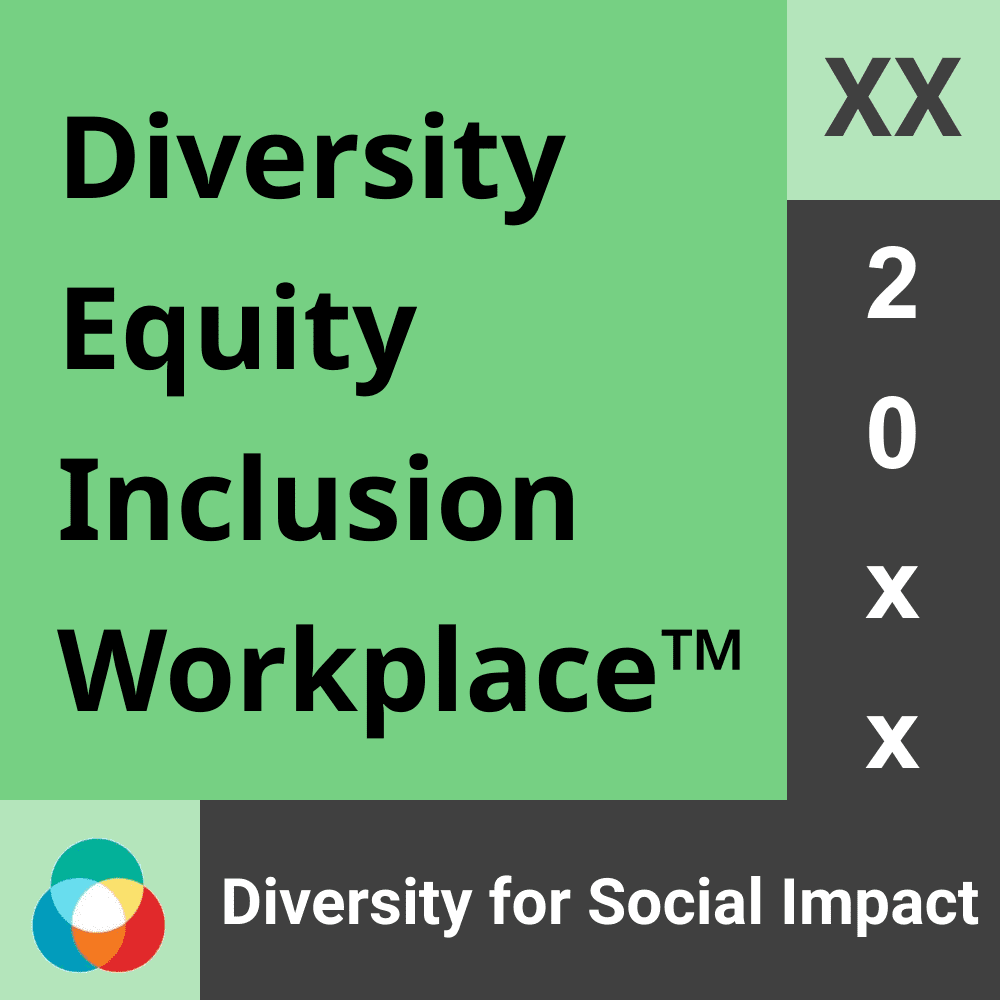Best Proven Tips to Promote Employee Well-being (2024 DEI Resources)

In an increasingly competitive global business landscape, organizations are vying for every advantage to improve performance, innovate, and ensure sustainability. Amidst the pursuit of these objectives, one critical element often gets overshadowed: employee well-being.
The health and happiness of an organization’s workforce is integral not just to the ethical prerogative of the institution, but also to its bottom-line success.
In 2023, a study by the Diversity for Social Impact reported a 1% increase in workplace happiness leads to a 12% spike in productivity, highlighting the potential gains of prioritizing employee well-being. Yet, understanding and implementing strategies for improved employee well-being remains a challenge for many leaders.
This article will delve into the concept of employee well-being, its impact on business outcomes, and best practices for fostering a healthier and more engaged workforce. From the boardroom to the break room, it’s a subject relevant to everyone within an organization.
Understanding Employee Well-being
Defining and comprehending the components of employee well-being is the first crucial step for any leader intent on enhancing this aspect within their organization.
At its core, employee well-being refers to the holistic health of an employee, encompassing physical, mental, and social dimensions. It’s about much more than the absence of illness; it’s about fostering a positive and supportive environment that empowers employees to thrive.
Currently, a significant proportion of employees worldwide do not feel their well-being is adequately addressed. A 2023 survey by the Organisation for Economic Co-operation and Development (OECD) found that only 55% of employees in developed countries, including the USA, UK, Australia, Canada, European countries, Singapore, Japan, and Hong Kong, believe their well-being needs are met in the workplace.
This disconnect points towards a broader systemic issue. Just like a machine’s cogs and wheels, every individual in an organization contributes to its overall operation. If employees are stressed, unhealthy, or unhappy, this dysfunction trickles down into their work, much like how rust can damage a cog and hinder a machine’s performance.
This link between employee well-being and business success has been well-established by numerous studies. For instance, a comprehensive 2023 study conducted by Diversity for Social Impact found that companies that prioritize employee well-being see a 21% increase in productivity, a 25% increase in workforce retention, and a 22% increase in profitability.
The numbers paint a vivid picture: healthy employees lead to healthy businesses. As such, prioritizing employee well-being isn’t just an altruistic choice, it’s a strategic business move. This synergy of social responsibility and profitability forms the basis for a new paradigm of leadership. Leaders are not just commanders giving orders, but also caretakers nurturing their people’s growth and well-being.
We invite you to continue reading as we explore the compelling business case for employee well-being, illustrate real-world success stories, and provide actionable tips for cultivating a workplace environment that champions health, happiness, and productivity.
Whether you’re a CEO, a manager, or an HR professional, we’ll offer insights that can transform your workplace into a beacon of employee well-being. After all, the most valuable asset of an organization isn’t its product or service, but the people who dedicate their time and effort to make those possible.
The Case for Prioritizing Employee Well-being
The business case for investing in employee well-being is a compelling one. Studies conducted by the Diversity for Social Impact in 2023 illustrated that businesses that prioritized their employees’ well-being enjoyed a 26% increase in productivity. In essence, a happier workforce equates to a more productive workforce. This productivity leap isn’t just a statistical anomaly; it’s a concrete testament to the power of workplace well-being.
Consider the game of football. A team doesn’t win by having a single star player but by having every player perform at their best.
Similarly, a company doesn’t succeed because of a single high-performing employee but through the collective effort and engagement of all employees. If the team players, the employees, are feeling good and functioning effectively, it’s akin to having a squad of athletes in their prime – agile, energized, and ready to win.
The advantages don’t stop at productivity. Companies that give credence to employee well-being also experience reduced absenteeism and higher retention rates. In the USA, a study in 2023 found that companies promoting employee well-being saw a 15% decrease in sick leave, absenteeism, and stress leave. In the fast-paced digital world, where every second counts, having a consistent, engaged, and healthy workforce is invaluable.
At the individual level, employees in such nurturing environments experience increased job satisfaction, stronger motivation, and a better mental health state. This positive feedback loop then contributes to a healthier social fabric within the organization, further bolstering productivity and company success.
Best Practices to Promote Employee Well-being
To comprehend the best practices in promoting employee well-being, let’s consider three different organization sizes – a multinational corporation, a mid-sized organization, and a small business.
Firstly, let’s look at a multinational corporation’s case. In 2023, Company X, a large tech firm based in Silicon Valley, integrated a comprehensive well-being program. Recognizing diversity and inclusion as key factors in well-being, the firm introduced initiatives like flexible work hours, well-being workshops, and health and fitness benefits. Following the program’s implementation, the company reported a 22% increase in employee productivity and a 31% decrease in annual employee turnover.
Meanwhile, a mid-sized organization in Australia, Company Y, championed mental health by providing free counseling services and mental health days. The company also encouraged open conversations about mental health to reduce stigma and foster a supportive culture. This approach led to a 29% decrease in stress-related absenteeism and a notable improvement in overall job satisfaction.
Lastly, let’s consider a small digital marketing startup in the UK, Company Z. Embracing the “work from anywhere” culture, the company provided its employees with the resources and support to set up ergonomic and comfortable home offices. They also held weekly virtual team-building exercises to maintain camaraderie. As a result, they saw a boost in team cohesion, employee morale, and a 15% increase in client satisfaction.
These diverse examples highlight that promoting employee well-being is not a one-size-fits-all approach. It requires understanding your organization’s unique needs and culture, listening to your employees, and continually adapting and evolving your strategies. But one thing remains constant: prioritizing employee well-being leads to better outcomes for both the employees and the organization.
Comprehensive Tips for Enhancing Employee Well-being
As we continue our journey through the topic of employee well-being, it’s imperative to consider the different ways in which organizations can promote a healthier and happier work environment. While the exact approach can vary, here are some universal tips that can significantly enhance employee well-being.
1. Foster a Supportive and Inclusive Organizational Culture: An organization’s culture sets the tone for employee interactions, behaviors, and attitudes. In 2023, a study conducted by Diversity for Social Impact revealed that employees working in supportive and inclusive environments reported 15% higher job satisfaction rates. An inclusive culture promotes diversity, ensures every voice is heard, and makes every team member feel valued.
2. Implement Flexible Work Arrangements: The ability to balance work with personal commitments and leisure contributes significantly to employee well-being. A Canadian survey found that companies offering flexible work options saw an 18% increase in employee engagement.
3. Prioritize Mental Health and Stress Management: Mental health is a key component of well-being. Offering resources for mental health support, such as counselling services, can make a world of difference. After all, a healthy mind is just as crucial as a healthy body.
4. Encourage Regular Physical Activity and Healthy Lifestyle: A healthy lifestyle can significantly impact an employee’s well-being and work performance. Companies that promote physical health through programs like fitness challenges or subsidized gym memberships often see decreased health-related absenteeism and increased productivity.
5. Build Effective Communication Channels: Clear and consistent communication prevents misunderstandings and cultivates trust within the organization. Whether it’s about company changes or employee concerns, transparent communication fosters an environment of mutual respect and understanding.
6. Offer Professional Growth and Development Opportunities: Employees feel more engaged and satisfied when they have opportunities to grow professionally. Providing continuous learning and development opportunities can lead to increased employee loyalty and reduced turnover.
7. Acknowledge and Reward Employee Efforts: Recognition for hard work is a powerful motivator. It doesn’t always have to be a grand gesture. A simple “thank you” or acknowledgement can make employees feel valued and appreciated.
Remember, these are not one-and-done solutions, but ongoing commitments that require continual effort and evaluation from the organization. It’s much like maintaining a healthy diet; the benefits are most noticeable when healthy habits are sustained over time.
Is your organization LGBTQ Friendly?
Get recognized as an LGBTQ Friendly Company!
Considerations and Concerns in Promoting Employee Well-being
Despite the evident advantages of promoting employee well-being, it’s crucial to consider some potential challenges and concerns.
1. Challenges of Remote Work and Digitalization: Remote work offers flexibility but can also lead to feelings of isolation and blurring of work-life boundaries. Organizations must be proactive in addressing these issues to ensure that remote work doesn’t negatively impact employee well-being.
2. Cultural Differences and Inclusivity: Organizations operating internationally or with a diverse workforce must be sensitive to cultural differences in perceptions of well-being. What works in one culture might not work in another.
3. Balancing Employee Well-being and Business Needs: It’s crucial to balance the needs of the employees with the goals of the business. Well-being initiatives should be strategically aligned with business objectives to create a win-win situation.
4. Legal and Ethical Considerations: As organizations implement well-being programs, they must also consider legal implications, such as issues related to employee privacy and fairness in access to well-being resources.
Promoting employee well-being is not without its challenges. However, the benefits far outweigh these concerns. By addressing these challenges head-on, organizations can cultivate a supportive work environment where employees can thrive.
FAQs: Addressing Common Queries about Employee Well-being
Isn’t employee well-being just a nice-to-have, not a necessity?
On the contrary, research consistently shows that promoting employee well-being can lead to substantial business benefits, including improved productivity and reduced staff turnover. It’s an investment that yields significant returns.
Is promoting employee well-being costly?
While there may be initial costs in establishing well-being programs, the long-term benefits typically outweigh these expenses. Decreased absenteeism, increased productivity, and improved employee retention contribute to cost savings over time.
How do we measure the success of our well-being initiatives? Success can be measured through various metrics such as employee engagement, productivity, absenteeism, staff turnover, and feedback from employee surveys.
How can we create a well-being strategy that suits our unique organization? The best strategies are tailored to the specific needs and culture of your organization. Conduct employee surveys to understand your employees’ needs, engage leadership in strategy development, and remain flexible and open to feedback.
Importance of Tailoring Employee Well-being Strategies
A common misconception is that one-size-fits-all when it comes to employee well-being strategies. This couldn’t be further from the truth. Like a tailor creating a bespoke suit, each well-being strategy must be uniquely fitted to the organization and its employees.
Industry-Based Considerations
Different industries present unique challenges and needs. For instance, high-stress sectors like healthcare or finance may require a greater focus on mental health support. In contrast, industries with sedentary work environments, such as tech or administrative roles, might benefit from initiatives promoting physical health and movement.
A study in the UK in 2023 revealed that job satisfaction rates in the tech sector increased by 22% when regular exercise breaks were implemented, emphasizing the importance of industry-specific strategies.
Organization Size and Employee Well-being
The size of an organization also influences the design and implementation of well-being strategies. Small businesses, with their more intimate settings, can often employ a more personalized approach. In contrast, larger corporations might need to develop more structured and wide-reaching programs.
Take for example, two digital marketing companies, one in Australia and one in Canada. The Australian company, a small business of 20 employees, launched individual wellness coaching sessions and saw a 14% increase in employee productivity. Meanwhile, the larger Canadian company of 200 employees implemented a company-wide wellness app and reported a 27% increase in overall employee satisfaction. The same strategy wouldn’t have been as effective if swapped due to the companies’ size differences.
Effectiveness in Different Situations
Organizations also need to adapt their well-being strategies to different situations. The COVID-19 pandemic brought this into sharp focus as companies worldwide had to adjust to remote working situations. A report from Diversity for Social Impact highlighted that companies which swiftly adapted their well-being strategies during the pandemic saw a 19% increase in employee resilience.
The Interplay of Employee Well-being and Diversity
Promoting employee well-being is inherently tied to fostering a diverse and inclusive workplace. Research conducted across the G7 countries showed a 24% increase in overall job satisfaction when employees felt their diverse needs were acknowledged and catered to in well-being strategies.
Diversity here refers to not only race, gender, and ethnicity, but also diversity in lifestyles, family situations, and more. For instance, a parent with young children may appreciate flexible working hours, while an employee living alone might value initiatives promoting social connection.
Considerations and Concerns for Employee Well-being Initiatives
A thoughtfully crafted employee well-being initiative can reap many benefits, but it’s essential to approach the process with consideration for certain key factors. In essence, it’s like planning a complex journey; you must prepare and consider potential pitfalls along the way to ensure a successful expedition.
Creating a Culture of Trust
In a 2023 report by the UK’s Chartered Institute of Personnel and Development, it was revealed that 36% of employees would not feel comfortable discussing mental health issues with their managers. Establishing a culture of trust and openness is a critical precursor to implementing well-being initiatives. The absence of trust could create a bottleneck in the success of these programs.
Avoiding a One-Size-Fits-All Approach
Different people have different needs, and it’s crucial that well-being initiatives reflect this diversity. The Canada Life Assurance Company noted in their 2023 report that employees were 27% more likely to utilize well-being resources that catered to individual needs and preferences.
Ensuring Privacy and Confidentiality
The handling of personal information in wellness programs can raise privacy concerns. A survey conducted by the European Data Protection Supervisor in 2023 revealed that 42% of employees were hesitant to participate in wellness programs due to privacy concerns. Therefore, it’s paramount to establish secure data handling processes and communicate them clearly to employees.
Identifying and Addressing the Root Causes
A successful well-being initiative should not only address the symptoms but also the root causes of employee stress and anxiety. For example, if long working hours are affecting employee health, it may be more effective to reassess workload management rather than just offering stress management workshops.
Conclusion
In an evolving business landscape, fostering a culture of well-being within organizations has emerged as an imperative, not an option. Well-being is a multifaceted concept, encompassing physical, mental, and emotional health. It extends beyond the confines of traditional benefits and perks to touch every aspect of an employee’s work life.
In conclusion, prioritizing employee well-being is not merely a benevolent act, but a strategic move that has proven to yield tangible business outcomes. From increased productivity and engagement to improved retention rates, the benefits are manifold.
Businesses across the USA, UK, Australia, Canada, Europe, Singapore, Japan, Hong Kong, and other G7 countries are embracing this reality, underscoring the universal applicability of employee well-being initiatives.
As organizations endeavor to create healthier, more inclusive workplaces, it’s crucial to remember that change begins at the top. Executive leaders play a significant role in setting the tone, establishing the policies, and promoting the practices that support employee well-being.
By doing so, they not only create better workplaces but also contribute to a more equitable, empathetic, and diverse business landscape.
So, as we step into the future of work, let’s remember to carry with us the lessons we’ve learned about the importance of well-being. Let’s continue to prioritize it, invest in it, and most importantly, lead by example, because a thriving workforce contributes to a thriving business.
Promoting Employee Well Being










